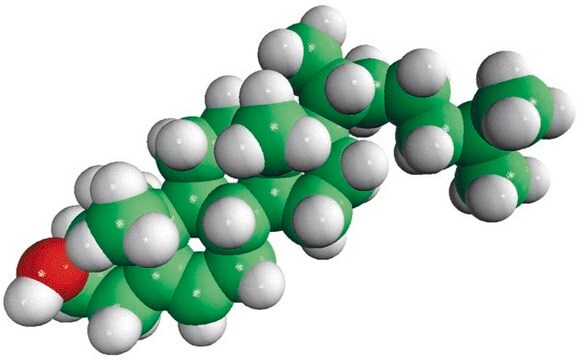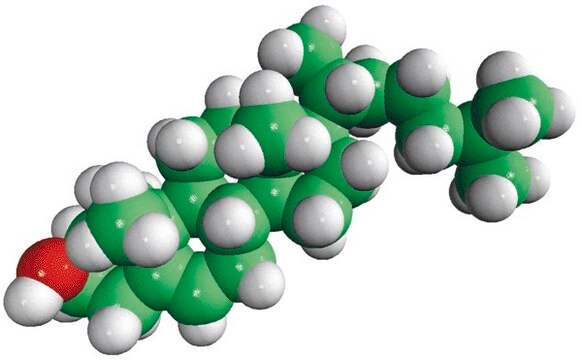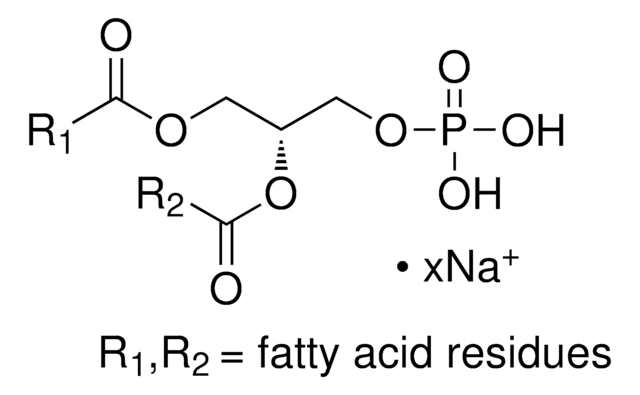Kluczowe dokumenty
C1231
Cholesterol, Plant-Derived
SyntheChol®
Synonim(y):
Cholesterol, Synthetic cholesterol, 3β-Hydroxy-5-cholestene, 5-Cholesten-3β-ol
About This Item
Polecane produkty
pochodzenie biologiczne
synthetic
agency
JP
NF
Ph. Eur.
Próba
≥98%
Formularz
crystals
bp
360 °C (lit.)
mp
147-149 °C (lit.)
gęstość
1.067 g/mL at 25 °C (lit.)
przydatność
suitable for manufacturing use
Warunki transportu
dry ice
temp. przechowywania
−20°C (−15°C to −25°C)
ciąg SMILES
CC(C)CCC[C@@H](C)[C@H]1CC[C@H]2[C@@H]3CC=C4C[C@@H](O)CC[C@]4(C)[C@H]3CC[C@]12C
InChI
1S/C27H46O/c1-18(2)7-6-8-19(3)23-11-12-24-22-10-9-20-17-21(28)13-15-26(20,4)25(22)14-16-27(23,24)5/h9,18-19,21-25,28H,6-8,10-17H2,1-5H3/t19-,21+,22+,23-,24+,25+,26+,27-/m1/s1
Klucz InChI
HVYWMOMLDIMFJA-DPAQBDIFSA-N
informacje o genach
human ... POLA1(5422) , TOP2A(7153)
rat ... Ar(24208) , Polb(29240)
Szukasz podobnych produktów? Odwiedź Przewodnik dotyczący porównywania produktów
Działania biochem./fizjol.
Uwaga dotycząca przygotowania
Informacje prawne
Kod klasy składowania
11 - Combustible Solids
Klasa zagrożenia wodnego (WGK)
WGK 1
Temperatura zapłonu (°F)
Not applicable
Temperatura zapłonu (°C)
Not applicable
Środki ochrony indywidualnej
Eyeshields, Gloves, type N95 (US)
Wybierz jedną z najnowszych wersji:
Masz już ten produkt?
Dokumenty związane z niedawno zakupionymi produktami zostały zamieszczone w Bibliotece dokumentów.
Klienci oglądali również te produkty
Nasz zespół naukowców ma doświadczenie we wszystkich obszarach badań, w tym w naukach przyrodniczych, materiałoznawstwie, syntezie chemicznej, chromatografii, analityce i wielu innych dziedzinach.
Skontaktuj się z zespołem ds. pomocy technicznej






